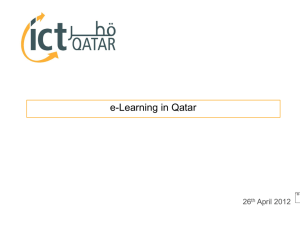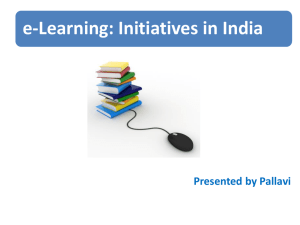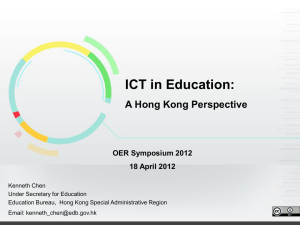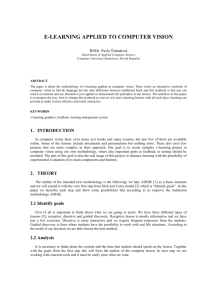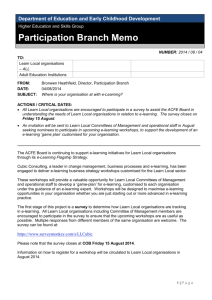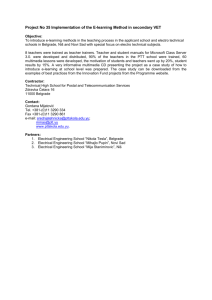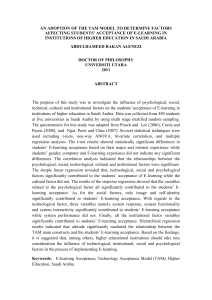E-learning at the University of Qatar
advertisement
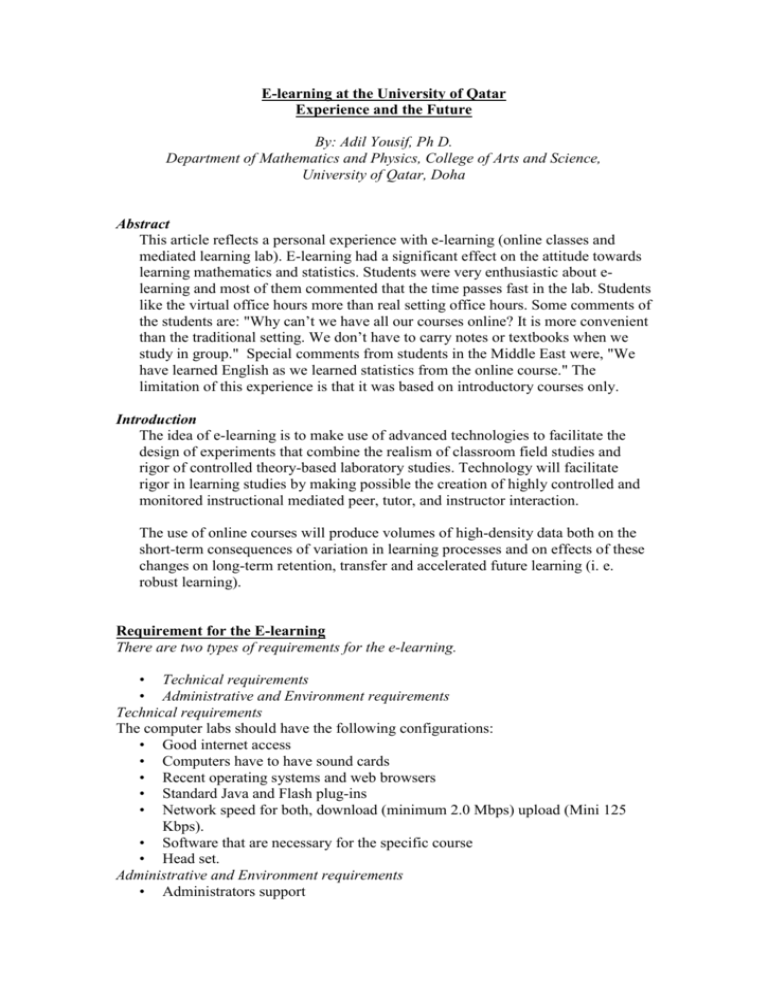
E-learning at the University of Qatar Experience and the Future By: Adil Yousif, Ph D. Department of Mathematics and Physics, College of Arts and Science, University of Qatar, Doha Abstract This article reflects a personal experience with e-learning (online classes and mediated learning lab). E-learning had a significant effect on the attitude towards learning mathematics and statistics. Students were very enthusiastic about elearning and most of them commented that the time passes fast in the lab. Students like the virtual office hours more than real setting office hours. Some comments of the students are: "Why can’t we have all our courses online? It is more convenient than the traditional setting. We don’t have to carry notes or textbooks when we study in group." Special comments from students in the Middle East were, "We have learned English as we learned statistics from the online course." The limitation of this experience is that it was based on introductory courses only. Introduction The idea of e-learning is to make use of advanced technologies to facilitate the design of experiments that combine the realism of classroom field studies and rigor of controlled theory-based laboratory studies. Technology will facilitate rigor in learning studies by making possible the creation of highly controlled and monitored instructional mediated peer, tutor, and instructor interaction. The use of online courses will produce volumes of high-density data both on the short-term consequences of variation in learning processes and on effects of these changes on long-term retention, transfer and accelerated future learning (i. e. robust learning). Requirement for the E-learning There are two types of requirements for the e-learning. • Technical requirements • Administrative and Environment requirements Technical requirements The computer labs should have the following configurations: • Good internet access • Computers have to have sound cards • Recent operating systems and web browsers • Standard Java and Flash plug-ins • Network speed for both, download (minimum 2.0 Mbps) upload (Mini 125 Kbps). • Software that are necessary for the specific course • Head set. Administrative and Environment requirements • Administrators support • • • • • • • E-learning course content Learning management system Active web services that afford service on demand. Lab assistance and Teaching Assistance. Student accessibility to internet. Colleagues support and interest Collaboration work (group teaching) Qatar University Experience: The online course that has been implemented at the University of Qatar was Elementary Statistics (Math 1051153). The class took place during the fall semester of 2006. Students enrolled in this course are statistics students and also it is equivalent to Business Statistics I. There were thirteen students enrolled in the online course and all of them were from statistics major students. Ten students interacted positively and all of them passed the course with a "C" or better, two students dropped at an early stage of the semester and only one student seemed like didn’t interact positively. Experience Assessment The class was meeting once a week for sharing ideas and elaborating on some parts were students experienced some difficulties. There were three virtual office hours per week on three different days (one hour each day), all the virtual office hours extended beyond the scheduled time. In my own assessment I believe the online course had changed the attitude of the students towards learning elementary statistics positively. The change in the attitude was assessed based on personal observations and some comments from the students. Since there was no traditional setting session during that semester, there was no chance to assess the achievement. However from my past experience which was a mediated learning lab classes only (students did not have access to the course outside the lab) e-learning affected the achievement significantly. During that experience there was a significant difference in the tests scores between e-learning students and students in the traditional setting. E-learning students outperformed the control group. Example of the Observations • Students work until and beyond the end of the class. • The attendance is almost 100% for all sessions during the entire semester. • Collaborative learning • Logging in the site during the virtual office hours on regular basis. Some positive comments I heard from the students are • "Why can’t we have all our courses online" • "We have learned English as we as statistics from the online course" • "It is more convenience than traditional setting" • "We don’t have to carry notes or book when we study in group." Course Assessment There was a continuous assessment throughout the semester and the final grade was assigned based on the following: • • • • online quizzes, in-class assignments, final project in terms of a small paper paper and pencil tests. Some Challenges There were some difficulties that should be avoided in the future: – – – – – – We should have well equipped labs and reliable online technical support. For each lab there should be a lab assistant and a teaching assistant. The software licenses should be renewed before the ending period. Online course should be specified and announced to the students before the registration. There should be an orientation to the faculty as well as to the students on e-learning For each course offered online there should be a traditional setting session in order for the students to have the two options available. Although all the courses that I offered online are introductory courses, which could be a limitation of this experience, but the way students interacted with them encouraged me to continue the idea. However I think students in advanced classes (Junior or Senior) will benefit more since they will gain more college experience, and for our students in the Middle East, their English language skills will be improved. I am planning to offer a four-hundred level course (Time Series Analysis) during the fall of 2007 and will do reassessment.



